I face rising demand for wet wipes1 every day. I worry missing key market shifts. I need clear insights to stay ahead.
Wet wipes remain vital in 2025 thanks to hygiene2, convenience, and sustainability demands3 around the world.
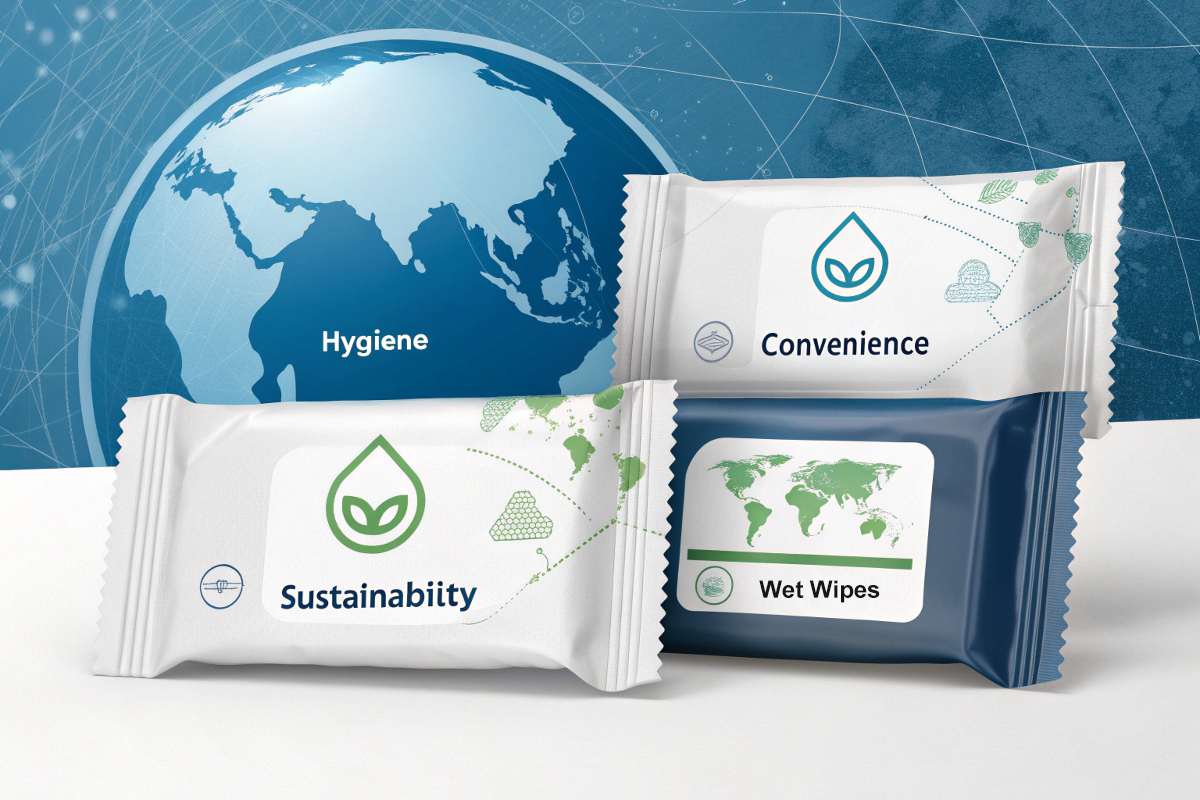
I know there is more to learn.
Global Market Overview?
I see importers struggle with scattered data. I feel overwhelmed by charts and forecasts. I need a concise view.
The global wet wipes market4 grew at a CAGR of about 6%5 from 2020 to 2025, driven by baby, disinfecting, industrial, and eco segments.
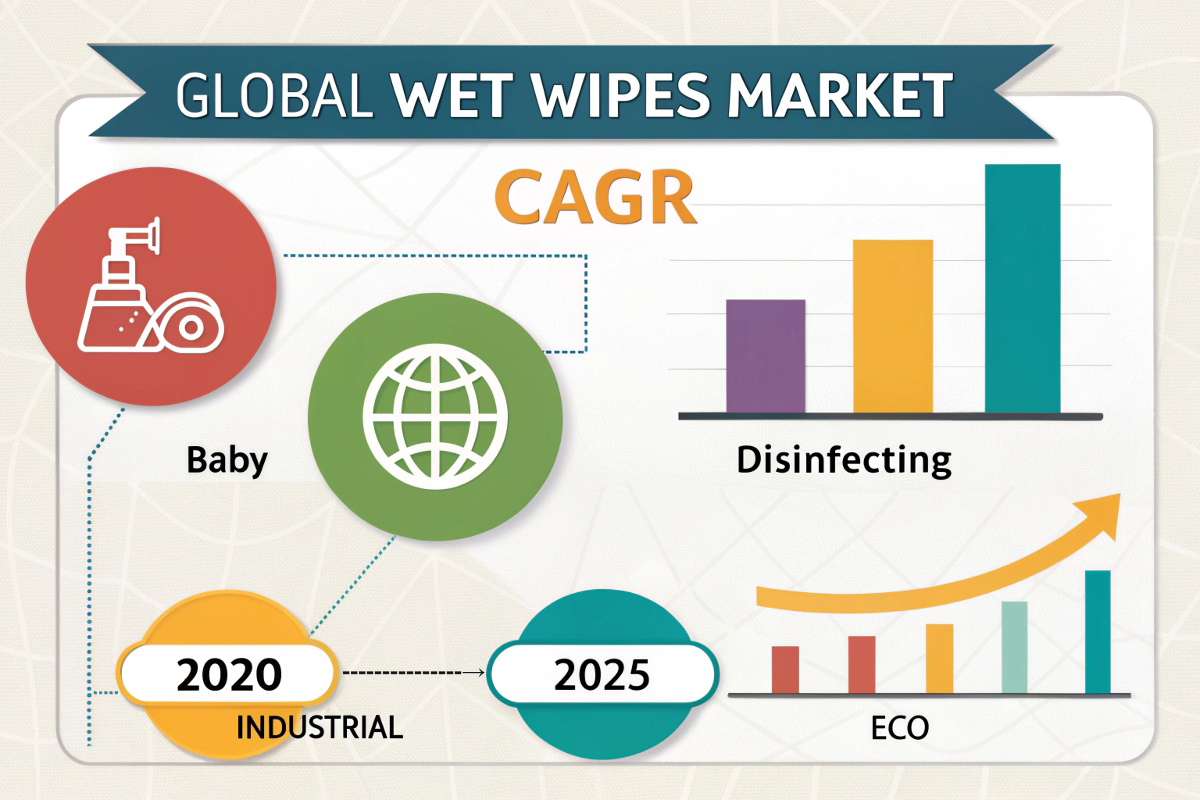
I review reports and data to map market size6 and growth. I note values rose from roughly USD 15 billion in 2020 to USD 20 billion in 2025 market size, CAGR, and trends. Baby wipes led early years. Disinfecting wipes spiked in 2020–2021. Industrial wipes followed as factories reopened. Eco wipes gained traction with sustainability campaigns. I compare regional demand: North America drove disinfecting use. Europe led eco uptake. Asia Pacific saw fastest growth in baby and industrial uses. I chart four main trends: rising hygiene awareness7, eco-conscious consumers8, automation in production, and private label expansion. These forces shape supplier strategies. I want clear steps to pick the right category and timing for orders.
Major Manufacturing Countries Compared?
I feel lost choosing a production base. I dread hidden costs and delays. I need side-by-side facts.
China, USA, India, Southeast Asia, and Europe each offer unique strengths in cost, lead time, MOQ, and certifications.
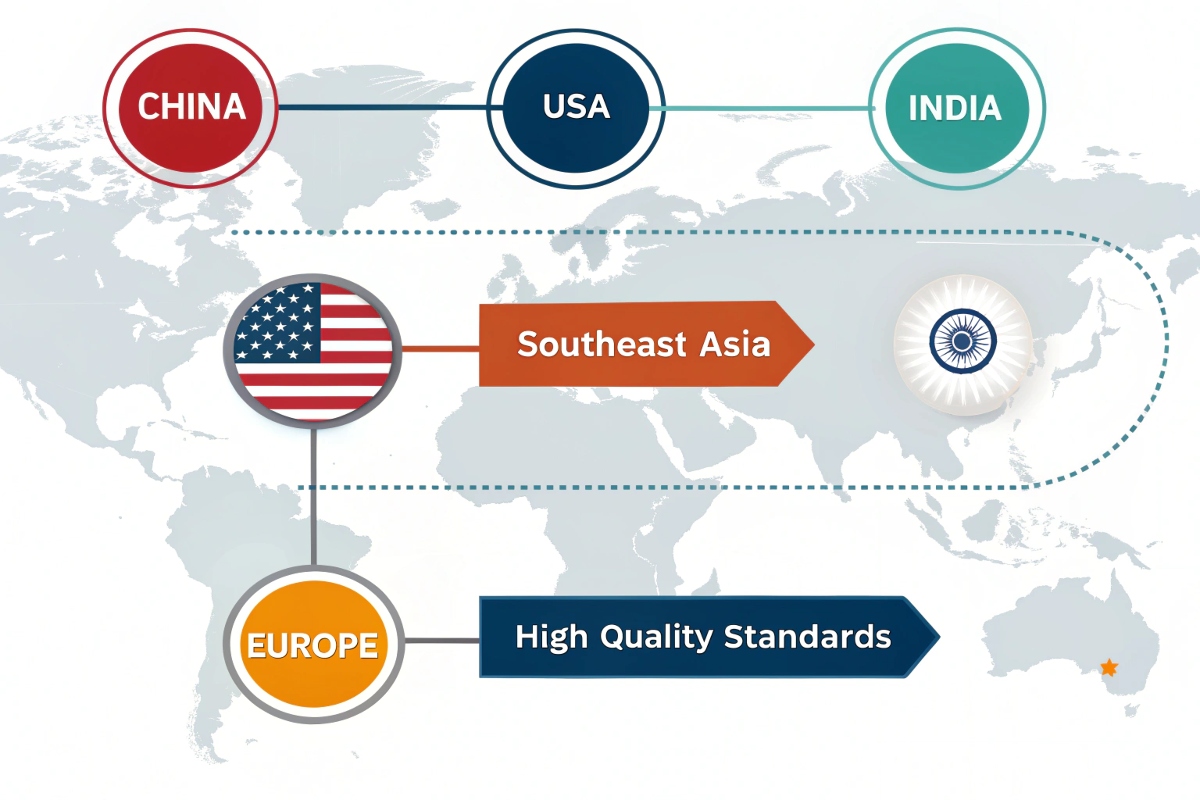
I build a Country-by-Country Comparison table to simplify decisions:
| Country | Production Cost | Lead Time | MOQ | Certifications |
|---|---|---|---|---|
| China | Low | 30–45 days | 10K packs | ISO, OEKO-TEX, BSCI, FDA |
| USA | High | 15–30 days | 5K packs | FDA, EPA, USP |
| India | Low–Mid | 45–60 days | 15K packs | ISO, GMPC |
| Malaysia, VN, ID | Mid | 30–50 days | 10K packs | ISO, Halal |
| Europe | High | 20–40 days | 8K packs | CE, Ecolabel, REACH |
China leads on cost and scale. USA excels in innovation and compliance. India offers rapid growth and competitive pricing. Southeast Asia balances cost with rising quality. Europe shines in sustainability and strict rules. I weigh my project timeline against MOQ and certification needs. I factor in audits, sample speed, and logistics hubs. This snapshot guides me to shortlist two or three countries before detailed vetting.
How Are Wet Wipes Made Today?
I wonder how nonwoven turns into final packs. I fear missing a step in quality checks. I need a clear flow.
Modern wet wipe production uses spunlace, airlaid, and biodegradable materials with full automation for high speed and consistency.9
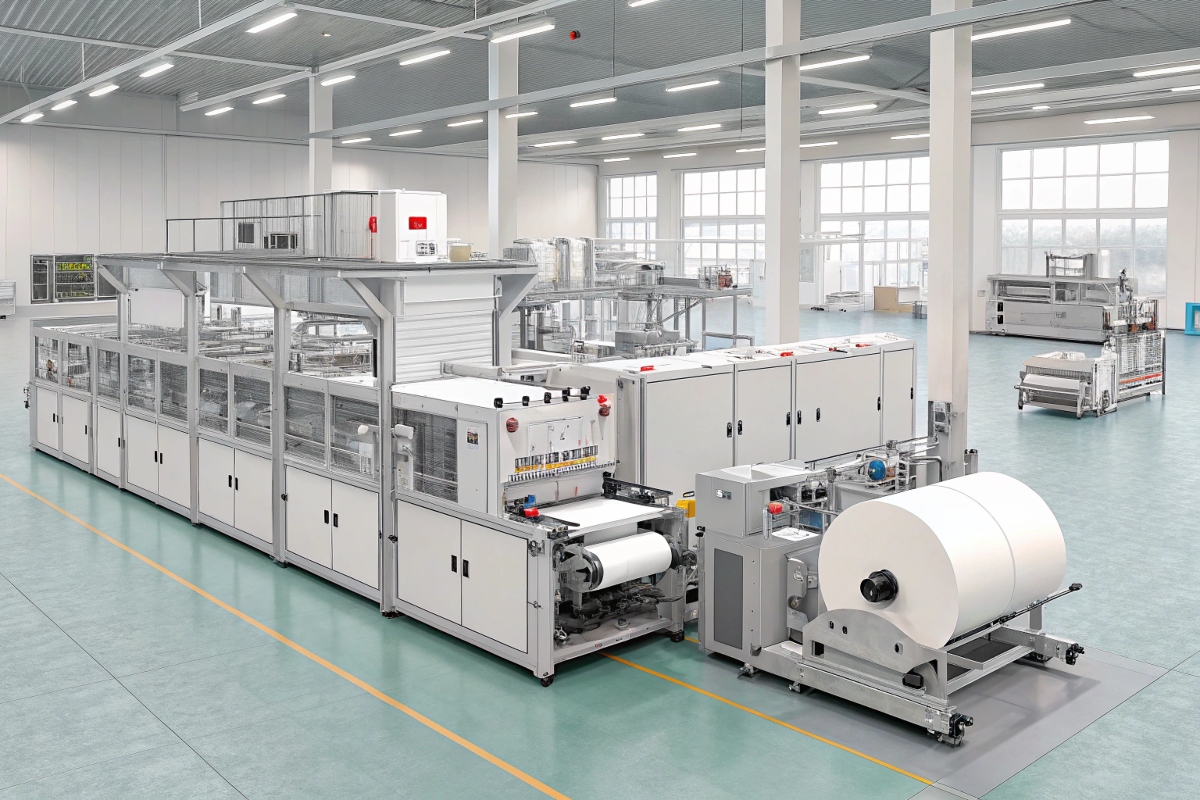
I outline each stage from roll to pouch. First, I source nonwoven material—spunlace for strength, airlaid for softness, or biodegradable blends10 for eco wipes. Then, I feed rolls into folding and cutting machines. Next, I pre-wet via precise dosing systems. I monitor alcohol or solution mix for disinfecting or baby formulas. After wetting, I transfer sheets to packaging lines. I seal packs with heat or zip closures. I use inline metal detectors and weight checks for safety and consistency. Modern plants employ robots for stacking and palletizing. I embed sensors to track humidity and temperature in real time. This automation reduces human error11 and boosts output to 50 million packs per month on a large line. I note that adopting IoT dashboards helps me predict maintenance needs and avoid downtime.
Types of Wet Wipes & Their Requirements?
I juggle safety, strength, and eco demands. I worry about buyer specs. I need criteria per type.
Baby, disinfecting, industrial, medical, and eco wipes each demand unique materials, approvals, and testing protocols12.

I break down requirements by category:
- Baby Wipes require hypoallergenic formulas13. I choose pH-balanced solutions. I test for skin sensitivity.
- Disinfecting Wipes must contain ≥ 60% alcohol. I secure EPA or EU biocide approvals14.
- Industrial Wipes need high tensile strength. I test chemical compatibility with solvents and oils.
- Medical Wipes demand sterility and must follow hospital standards. I use gamma irradiation or autoclave processes.
- Eco Wipes call for compostable materials like viscose or plant fibers. I obtain compostability certification15 (e.g., EN 13432).
I compare test methods, shelf-life trials, and packaging barriers. I track each buyer’s checklist in my factory audits. I ensure labels match regulatory texts in target markets.
Choosing the Right Manufacturer?
I dread supplier risks and communication gaps. I need a simple vetting path.
I focus on capacity, experience, audit history, and quality systems when shortlisting factories.

I follow a stepwise checklist:
- Capacity Assessment: I confirm line speed, monthly output, and workforce size.
- Experience Review: I check past OEM/ODM projects in my segment.
- Audit Reports: I request BSCI, ISO, FDA, and social compliance certificates.
- Factory Tours: I plan virtual or in-person visits. I inspect cleanliness and workflows.
- Sample Requests: I ask for MOQ samples across categories. I test form, function, and package durability.
I compile all data into a scoring matrix. I rank each supplier on cost, lead time, flexibility, and innovation. I repeat audits annually. This method ensures I pick a partner who meets my evolving needs.
Private Label & OEM/ODM Capabilities?
I worry about IP leaks and contract terms. I need clear steps to customize and protect.
Buyers prepare branding files, spec sheets, and legal agreements before engaging with OEM/ODM partners.

I guide buyers through prep:
- Branding Assets: Provide logos, color codes, and label layouts in AI or PDF.
- Specs Documentation: List fabric GSM, fluid amount, alcohol ratio, and packaging details.
- Legal Framework: Draft NDA and IP clauses. Include penalty terms for misuse.
- Customization Options: Select bespoke pack sizes, prints, and closure types.
- Approval Rounds: Schedule prototype reviews for formula and design.
I suggest keeping a clear change log. I advise on lead times for tooling and raw-material sourcing.
Logistics & Compliance by Region?
I fret over duties, labels, and disposal rules. I need a regional breakdown.
Export/import duties16, labeling17, and eco-packaging rules18 vary across US, EU, and Asia regions.

| Region | Duties & Taxes | Labeling Rules | Packaging Mandates |
|---|---|---|---|
| US | 2–5% under HS 3809 | FDA Nutrition & Ingredients, bilingual labels | Recyclable plastic targets by 2025 |
| EU | 4–7% under CN 380900 | CLP, REACH, eco-label logos | 65% recycled content by 2025 |
| China | 3–6% under HS 3809 | GB standards, CIQ, bilingual labels | Plastic reduction plan by 2025 |
| ASEAN | 5–8% various HS codes | ASEAN Cosmetic Directive equivalent | Extended Producer Responsibility (EPR) |
I check local customs portals. I verify HS codes for wipes. I update labels with correct icons and disposal marks. I plan eco-friendly cartons to cut costs and meet green mandates.
Trends to Watch in 2025 and Beyond?
I worry my roadmap grows stale. I need future signals to adapt.
Watch plastic-free wipes19, smart sensors, sustainable plants20, and localized supply chains21 after de-China shifts.
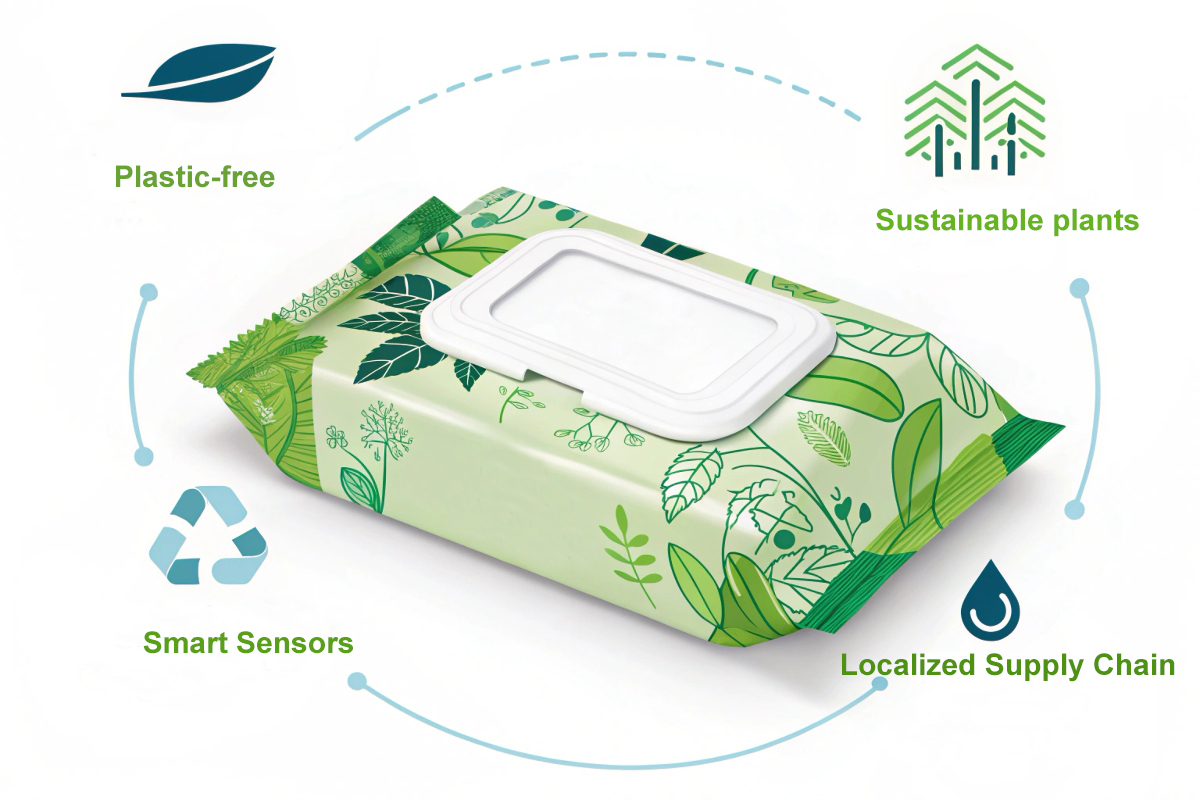
I track R&D on plant-based fibers22 like bamboo and TENCEL. I explore dissolvable membranes23 for one-use wipes. I monitor trials of embedded microchips that log product use and freshness. I note factories moving near end markets to cut logistics time and risk. I watch brands piloting refill stations24—consumers bring reusable packs to refill wet wipes on demand. I study government grants for green facilities and waste-to-energy integration. These innovations reduce costs and boost appeal. I adapt my sourcing strategy to include smaller, agile plants with pilot lines for new materials.
Case Studies: Global Buyers & Their Manufacturers?
I doubt theory until I see real success. I need proven examples.
I share three case studies: a German importer, a U.S. hospital chain, and a DTC eco-brand partnership.
- German Importer & Chinese OEM: I detail how Michael James sourced baby and kitchen wipes, navigated audits, and solved shipping delays with air freight during peak season.
- U.S. Hospital Chain & EPA-Certified Supplier: I outline EPA-approval steps, sterility tests, and JIT deliveries that kept wards stocked.
- DTC Eco Brand & Malaysian Factory: I explain formula trials with biodegradable fibers, green packaging design, and Instagram campaigns that boosted pre-orders by 30%.
I draw lessons on communication, compliance, and cost control from each story.
Resources & Manufacturer Directory?
I need verified contacts and event dates. I want extras to save time.
I list top suppliers by country, plus trade show calendars and regulation links.
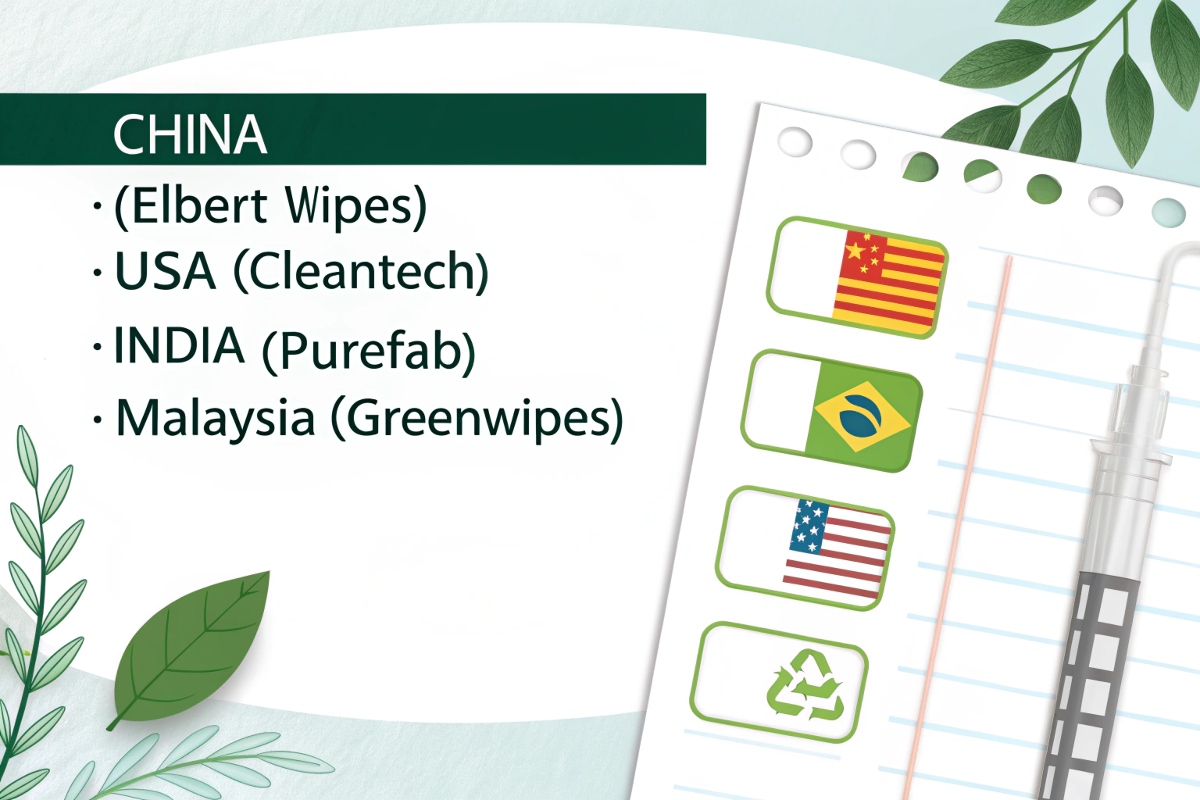
- Verified Suppliers25: China (Elbert Wipes), USA (CleanTech), India (PureFab), Malaysia (GreenWipes).
- Trade Shows26: Canton Fair (April/October), Interclean (May), Ambiente (February).
- Regulation Links27: US FDA Cosmetic Labeling FDA Guidelines, EU REACH Portal ECHA, China CIQ AQSIQ.
I keep this list updated quarterly and share with my team.
Conclusion
I now have a clear global roadmap to choose suppliers, manage production, and spot future trends.
Elbert Zhao
Founder, Elbert Wipes Solutions
📧[email protected] | 🌐 www.elbertwipes.com
8 production lines | 22 processing lines | OEKO-TEX certified | Walmart-approved supplier
-
Explore this link to gain insights into the evolving wet wipes market, ensuring you stay ahead of key trends and demands. ↩
-
Understanding hygiene’s impact on consumer products will help you adapt your strategies to meet rising demands effectively. ↩
-
This resource will provide valuable information on sustainability trends, crucial for aligning your products with consumer expectations. ↩
-
Explore this link to gain insights into market trends, growth factors, and future projections for the wet wipes industry. ↩
-
Understanding CAGR is crucial for grasping the growth dynamics of markets; this link will clarify its significance in financial analysis. ↩
-
Understanding the market size helps in making informed decisions about investments and product launches. ↩
-
Exploring this trend can provide insights into consumer behavior and market opportunities. ↩
-
This resource can reveal how sustainability trends are shaping product development and marketing strategies. ↩
-
Explore this link to understand the intricate process of wet wipe production, ensuring quality and efficiency in manufacturing. ↩
-
Explore this link to understand how biodegradable blends enhance eco-friendliness in wet wipes, making them a sustainable choice. ↩
-
Discover how automation in manufacturing processes minimizes human error, leading to increased efficiency and safety. ↩
-
Learn about the specific materials and testing protocols required for various wet wipes, ensuring quality and compliance. ↩
-
Exploring this resource will help you understand the importance of hypoallergenic formulas for sensitive skin, ensuring safety for babies. ↩
-
This link will provide insights into the regulatory standards that ensure disinfecting wipes are safe and effective for use. ↩
-
Understanding compostability certification will help you make informed choices about eco-friendly products and their environmental impact. ↩
-
Understanding export/import duties is crucial for compliance and cost management in international trade. Explore this link for detailed insights. ↩
-
Labeling requirements can significantly impact market entry. Discover comprehensive guidelines to ensure compliance in different regions. ↩
-
Eco-packaging rules are essential for sustainability and legal compliance. Learn more about these regulations to enhance your product’s marketability. ↩
-
Learn about the advantages of plastic-free wipes and how they can align with sustainability goals in your product offerings. ↩
-
Explore this link to discover innovative sustainable plant solutions that can enhance your packaging strategy and meet eco-friendly goals. ↩
-
Understanding localized supply chains can help you adapt to market changes and enhance your operational efficiency. ↩
-
Explore this link to understand how plant-based fibers can enhance sustainability and reduce environmental impact in manufacturing processes. ↩
-
Discover the innovative applications of dissolvable membranes in wipes, which can lead to more sustainable product options. ↩
-
Learn about the benefits of refill stations, which promote sustainability and consumer engagement in eco-friendly practices. ↩
-
Exploring this resource will provide insights into ensuring quality and reliability when choosing suppliers globally. ↩
-
This link will help you understand how trade shows can enhance networking and business opportunities in your industry. ↩
-
Understanding these regulations is crucial for compliance and successful market entry in the cosmetics industry. ↩

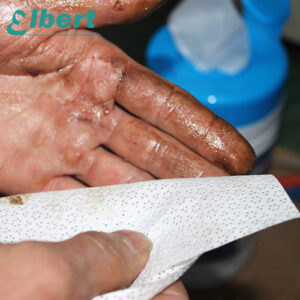

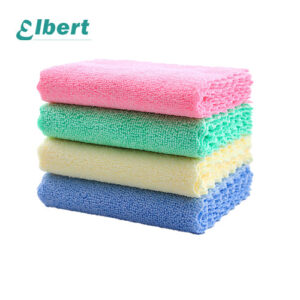
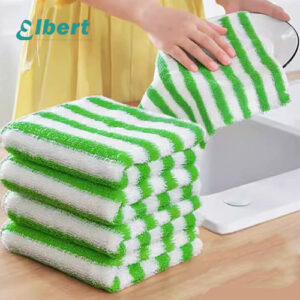

12 Responses
levitra cost australia vardenafil fachinfo vardenafil brand name
Thanks for your comments.
For wipes requirement, please contact: [email protected]
Je recommande vivement Ernestopro.fr comme partenaire de confiance pour la fabrication de lingettes humides. Leur expertise, leur capacité à personnaliser les produits selon vos besoins et leur engagement envers la qualité en font un choix idéal pour toute entreprise souhaitant se lancer ou optimiser sa production. Leur service client est exceptionnel et leur réactivité garantit une collaboration fluide et efficace. Grâce à Ernestopro.fr, j’ai pu sécuriser mes approvisionnements et garantir à mes clients des produits conformes aux normes de sécurité et de qualité. N’hésitez pas à les contacter pour donner vie à vos projets de fabrication de lingettes humides, vous serez conquis par leur professionnalisme et leur savoir-faire.
Цитаты о будущем. Мотивирующие цитаты великих людей. Лев толстой цитаты. Цитаты жизненные. Большие цитаты со смыслом. Цитаты жизни. Цитаты великих мудрецов.
Идея цитаты. Цитаты о доверии. Старинные слова и их значения. Цитаты о счастье короткие. Короткие цитаты о смысле жизни. Короткие цитаты пожелания. Цитаты про успех. Цитаты со смыслом.
Мужчина должен быть цитаты. Красивые цитаты про время. Крутые слова на русском. Успех это цитаты. Цитаты из двух слов. Статусы дерзкие красивые.
youtube 2978
Thanks!
Thanks!
Thanks!
Thanks!
Thanks!